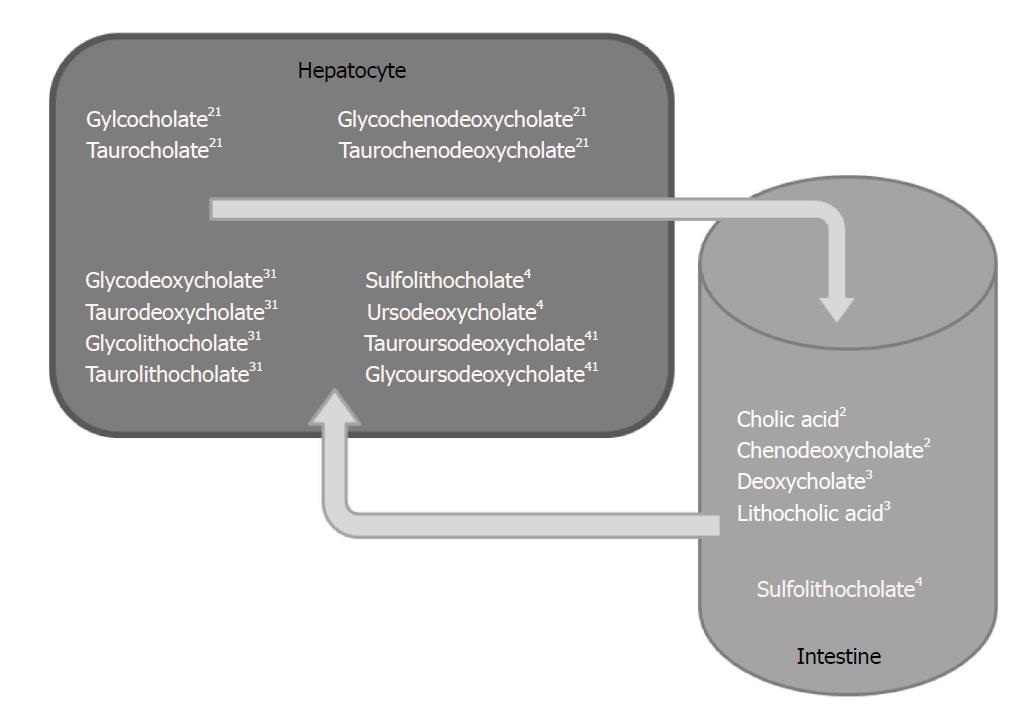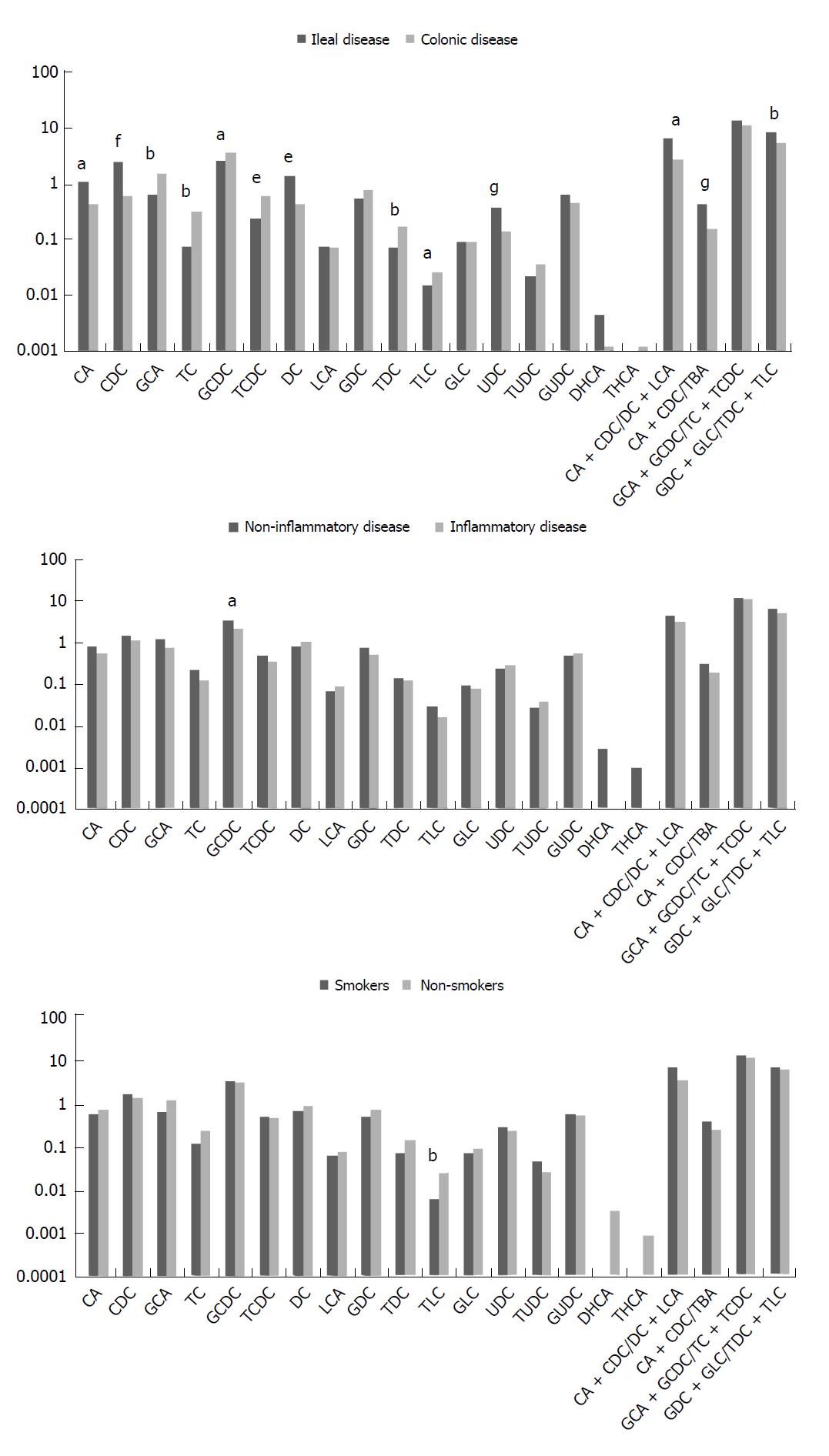Copyright
©The Author(s) 2018.
World J Clin Cases. Apr 16, 2018; 6(4): 44-53
Published online Apr 16, 2018. doi: 10.12998/wjcc.v6.i4.44
Published online Apr 16, 2018. doi: 10.12998/wjcc.v6.i4.44
Figure 1 Graphic representation of conjugated1 or not conjugated primary2, secondary3 and tertiary4 bile acids.
Figure 2 Representation of bile acid subtypes in 3 different situations: Ileal vs colonic disease; inflammatory vs non-inflammatory disease and smokers and non-smokers.
TBA: Total bile acids; CA: Cholic acid; CDC: Chenodeoxycholate; DC: Deoxycholate; LCA: Lithocholic acid; UDC: Ursodeoxycholate; TC: Taurocholate; GCA: Gylcocholate acid; TCDC: Taurochenodeoxycholate; GCDC: Glycochenodeoxycholate; TDC: Taurodeoxycholate; GDC: Glycodeoxycholate; TLC: Taurolithocholate; GLC: Glycolithocholate; TUDC: Tauroursodeoxycholate; GUDC: Glycoursodeoxycholate; DHCA: Dihydroxycholestanoic acid; THCA: Trihydroxycholestanoic acid; CA + CDC/DC + LCA: Primary bile acids on secondary bile acids ratio; CA + CDC/TBA: Primary bile acids on TBA ratio; GCA + GCDC/TC + TCDC: Conjugated primary bile acids with glycine on taurine ratio; GDC + GLC/TDC + TLC: Conjugated secondary bile acids with glycine on taurine ratio. aP < 0.05; bP < 0.01; eP < 0.001; fP < 0.0001; gP < 0.00001.
- Citation: Girardin M, Hadengue A, Frossard JL, the Swiss IBD Cohort Study Group. High prevalence of cholestasis, with increased conjugated bile acids in inflammatory bowel diseases patients. World J Clin Cases 2018; 6(4): 44-53
- URL: https://www.wjgnet.com/2307-8960/full/v6/i4/44.htm
- DOI: https://dx.doi.org/10.12998/wjcc.v6.i4.44










